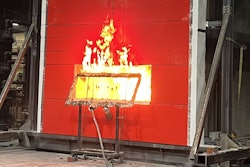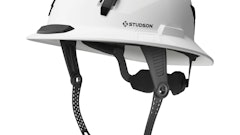
According to the National Safety Council a single lost-time incident averages over $40,000 in direct expenses, delays, rework or reduced productivity. However, jobsite injuries carry more than financial consequence. Behind each number is a person, and behind each incident is a cause.
Safety can’t be treated as an after-thought or box-checking exercise. It’s a strategic function for your construction business with operational and financial consequences. While written safety policies are necessary, they don’t capture the whole picture. I’ve worked in loss control and risk management for over 20 years, and in that time, I’ve heard plenty of excuses for why accidents happen. Phrases like “We didn’t have time” or “That’s not my job” can signal deeper issues that deserve attention.
The following eight statements are more than just excuses — they’re warnings. They reveal gaps in perception, training, or accountability that, left unaddressed, can lead to injuries or worse. Here’s how to interpret them and take meaningful action.
1. “We’ve Always Done It This Way.”
This phrase often pops up when a longstanding process is questioned. Or, if new safety procedures are introduced, it can be a sign that crews view them as bureaucratic rather than beneficial.
How to respond
- Connect the dots. Share near-miss data or industry trends showing how technology and innovation have allowed for better control of risk.
- Model the change. Supervisors and foremen should demonstrate new techniques and explain the “why.” If you see other contractors embracing new ways of doing things, point it out.
- Create a learning loop. Make continuous improvement — not status-quo compliance — the cultural baseline. Encourage all employees to make suggestions for improvement. An incentive reward for implemented ideas can further encourage employees to share openly.
2. “We Didn’t Have Time.”
This excuse is common when safety steps are skipped to meet deadlines. Workers feel pressured and believe target dates and staying on schedule outranks safety in the eyes of management.
How to respond
- Align words and actions. Never praise a crew for beating the clock if corners were cut: make it clear that no job is so urgent that it can’t be done safely.
- Build safety into the schedule. Allocate time to plan the job, train employees, inspect tools and equipment, and properly execute tasks. Sometimes this might require planning weeks in advance if a special piece of equipment needs to be rented to do the job safely.
- Reward the right outcomes. Celebrate teams that hit deadlines and maintain sound safety records.
3. “It Was Just a Quick Task.”
This is often heard after an incident involving a shortcut — no PPE, no lockout/tagout, no spotter. It means that risk is being mis-measured and short duration is falsely equated with low danger.
How to respond
- Emphasize consistency. Safety rules apply to every task, every time.
- Share real stories. Use case studies where a “two-minute job” became a life-altering incident.
- Reduce friction. Stock PPE, safety equipment and other tools where the work happens so compliance is the easy choice.
4. “That’s Not My Job.”
This excuse arises when someone notices a hazard but doesn’t act because it’s “someone else’s responsibility.” It can indicate that jobsite roles are siloed, and accountability for hazard recognition is unclear.
How to respond
- Train everyone to see hazards. Make basic risk identification a companywide competency, not a specialist’s duty. Ensure that everyone knows that safety is their job.
- Use peer accountability. Encourage crews to look out for each other and call time-out if they spot a coworker at risk, reinforcing the idea that safety is a team sport.
- Consider who you're working for. If you send employees to work at a poorly managed jobsite you may be sending your employees into harm’s way at no fault of their own. If a contractor has a reputation for unsafe or disorganized jobsites, consider if the project is worth it.
5. “I Didn’t Know.”
This is a red flag that training, communication, or onboarding may have fallen short.
Workers may not be aware of procedures, hazards or expectations. Onboarding, subcontractor orientation, or daily communication broke down. Perhaps the worker never absorbed the rule — or forgot it under stress.
How to respond
- Standardize onboarding. Ensure every new hire and sub gets the necessary safety briefing before stepping on site.
- Lean on visuals. Clear signage and simple infographics reinforce key points long after a training session ends.
- Verify understanding. Use the tell, show, do model. Explain, demonstrate, and have the trainee perform the task under supervision to verify learning. For some topics like fall protection and lockout tagout, formal classroom style training might be necessary.
6. “It Won’t Happen to Me.”
This mindset reflects overconfidence or complacency. It means there’s a disconnect between perceived and actual risk, and it can come from workers of all levels of experience, from younger employees who may feel invulnerable to veteran workers who believe familiarity equals immunity.
How to respond
- Rotate assignments. New tasks keep skills fresh and complacency low — just be sure cross-training is as thorough as initial training. This can also help strengthen your organizational skill resilience if someone leaves.
- Utilize near-misses. Treat close calls as learning opportunities, not sources of embarrassment. When you include these lessons in training, focus on what happened and how it was handled rather than who was involved. That way, crews can learn from the situation without anyone feeling singled out.
- Promote humility. Remind crews that it’s okay to ask questions and get clarification before completing a task no matter how experienced you are.
7. “We Didn’t Have the Right Equipment.”
This excuse often follows an incident involving makeshift tools or improvised techniques. It may signal gaps in procurement, logistics or communication that leave crews improvising with unsafe solutions.
How to respond
- Pre-job equipment audits. Confirm the right gear is on-site before the task starts.
- Streamline request channels. Make it easy for workers to report missing or damaged gear and make it easy for them to get new replacements by having extra available at the shop or allowing a trip to the home improvement store when needed.
- Budget for safety. High-quality equipment is an essential investment, not optional overhead.
8. “Nobody Got Hurt.”
This is used to justify unsafe behavior that didn’t result in an injury — this time. This statement is also a sign that the safety culture is reactive, rather than proactive.
How to respond
- Track leading indicators. Monitor near-misses, unsafe conditions, and safety observations, not just accidents.
- Celebrate prevention. Recognize crews that proactively address hazards before someone pays the price.
- Reframe success. Set specific and measurable safety goals, such as completing four jobsite safety inspections each month, rather than focusing on having zero incidents. Reinforce that the absence of injury doesn’t equal the presence of safety and that true success is building and maintaining a proactive culture where hazards seldom last long enough to reach the incident stage.
Excuses are comfortable but corrosive. They erode trust, create complacency, and too often precede larger incidents. By recognizing what these common justifications really signal and addressing them with clarity, consistency and compassion, contractors can transform a list of defenses into a roadmap for improvement.
Partner in Safety
Employees sharing excuses in the moment can be normal, but over time, it can chip away at both your safety culture and profitability. An injury can derail a crew, stall a project, and lead to rework, reputational damage or even lost bids down the line. Workers’ compensation insurance helps cover medical expenses and lost wages when someone gets hurt on the job — but your insurance company should be providing more value than just paying claims. If the only time you’re working with your insurance company is after an incident, you may not be making the most of your premiums. Service offerings differ between carriers but check to see if your insurance company provides on-site hazard assessments, customized training support, trend analysis and practical guidance from experienced loss control experts who know the realities of your work.
When your insurer understands the realities of your work and the risks your crews face, they can put their experience to work for you. They help you learn from the worst-case scenarios they’ve seen elsewhere, so you don’t have to live through them yourself. With the right partner, you can turn those lessons into action through early hazard identification and continuous improvement planning resulting in safer crews, fewer costly disruptions and a stronger business over time.



















